Somehow we’ve been going 15 years, and without wanting veer too much into the area of excessive self-congratulation, we figured it’d be nice to mark the occasion somehow.
As regular readers will know, we’re not the most frequently updated of sites, and so any time spent looking back at, and/or rehashing, old content is time we could be spending on something new. We’d like any anniversary content to add to what’s on the site already.
To that end, I thought it might be worth trying something a little bit different, with a series of articles that do look back at some of the games covered in the early days, but without following the traditional review format.
When we first started, our mantra was to not look back at old games with dewy-eyed nostalgia, but these pieces will pretty much be doing exactly that. To varying extents, they’ll also tend to be less about the games and a bit more about the person writing about them (i.e. me).
Viewing games through personal and life experiences is not necessarily everyone’s preferred approach, but it is a valid one and can be interesting, I think. If you like series like Gaming Made Me on Rock Paper Shotgun and Digitiser 2000’s Games of My Years, you’ll have an idea of the kind of thing we’re aiming for.
It’s possible this series – which I’ve chosen to call “When I played…” – might not be to everyone’s tastes, but let’s see how it goes. If it doesn’t sound like your cup of tea, we’ll have plenty of new reviews of old games to come, too.
Anyway, here’s part 1 of 5, about Wing Commander III: Heart of the Tiger.
Like many British kids of the eighties, I’d grown up with computers, not consoles. But, by the early-mid nineties, it was clear that the 16-bit era belonged to Mario and Sonic rather than, er, Zool. And, when the time finally came to abandon the family Atari ST and upgrade, it seemed as if a console would be the only viable option.
It was a reluctant consideration for my Dad, who had always championed the multi-faceted home computer over something that ‘just’ played games. I generally did ‘just’ want to play games, but you couldn’t exactly make out you were doing homework on a Mega Drive, so I tended to play along. Under such circumstances, it was perhaps inevitable that he was instinctively drawn in the first instance to the multimedia potential of devices like the Phillips CD-i and the 3DO, machines that could accurately be described as ‘ahead of their time’ because their vision of the console as a vital all-round entertainment accessory ultimately became a reality, although at the time the public wasn’t quite ready to embrace the concept and the tech wasn’t quite up to it either.
However, the advent of CD storage and the increase in the use of video (or Full Motion Video as it was referred to at the time), though long since derided, arguably made the concept of gaming less abstract to the general public, and the idea of a ‘multiplayer’ that the whole family could gather around to play a game, or watch a film, was one that appealed.
The CD revolution also came to PCs, too, but they were expensive: a mid-spec setup would cost the best part of £1000. I’d happened across DOS-powered machines occasionally, and based on my experiences they merely seemed to be devices upon which you could play inferior versions of Amiga and ST games. Ultimately, though, the balance of power shifted, particularly for ST owners, and soon my Dad was lugging his work 386 home so we could play the games the ST never got, such as Stunts or – particularly – Monkey Island 2.
So a new PC was the answer. While it had the CD drive and the dreadful FMV games, what sealed the deal was the next generation of LucasArts adventures, released on CD-ROM, with fully-voiced dialogue. Adventure games were the ones we’d played, and enjoyed, as a family – plus there was the old ‘homework’ chestnut, which was easily covered by bundled copies of Microsoft Works and Encarta. Secretly, I still pined for a 3DO because it had The Need for Speed, but kids are impulsive and stupid like that, and I was ultimately relieved that my parents actually had an active interest in these things rather than mindlessly getting me whatever I asked for.
Somehow I became aware of a PC games mag called PC Zone, and started buying it even before the new machine arrived. The first issue I ever bought had, as was traditional in those days, a demo CD, which featured a playable section of Alone in the Dark 3 as the ‘headline’ game (I wasn’t bothered about AITD, having been thoroughly baffled by the original) and a behind-the-scenes video presentation promoting Wing Commander III: Heart of the Tiger. (We were also told that something called Video for Windows was included on the CD – which I excitedly (and incorrectly) assumed would be a meaningful piece of software, like a basic editing package, rather than just the drivers you needed to actually make the thing work).
All demos are, of course, adverts for the game, but this was real PR fluff, the kind of stuff you might get on a DVD extra – featuring trailers, outtakes, interviews etc. Faintly ridiculous claims are made at various points: Malcolm McDowell, for example, says that the blue screen technique used for filming (to avoid building sets) could “save the movie industry”, while Mark Hamill compares creator Chris Roberts to George Lucas (which was a lot more impressive back then than it is now)*. Still, it definitely had the desired effect on me: Heart of the Tiger really did look like a movie – an actual film with a proper script, not just a series of clips shot in a couple of days with one famous person just doing it for the money. Admittedly, there wasn’t much about the actual game bits, but the Wing Commander series had good pedigree in this regard.
It could very reasonably be argued that everything about Wing Commander III smacked of crass Hollywood excess: a $4 million dollar budget, for a game spread across 4 CDs, with Luke Skywalker himself playing the main man; but, despite that, I’m not ashamed to say that I was impressed. While I knew deep down that many of the video-heavy CD games that were being released were unlikely to be much fun to play, this was something about which I felt genuine excitement.
It would have to wait, though. All the fab-whizzo stuff came at a price: both the game itself and the machine you needed to play it on were prohibitively expensive. Our soon-to-arrive 486 just about met the minimum requirements, but PC Zone’s reviewer Charlie Brooker (yes, him) had already offered a stark warning to mid-spec gamers by giving the game two scores – one for those who had a powerful machine and one for those that didn’t. My impression was that I was likely to be disappointed, and as I didn’t have a spare £55 knocking around, I instead plumped for a budget copy of Wing Commander II (which ironically ran altogether too fast) in order to catch up with some of the story.
When I finally got to play WCIII, a year or so later, it was everything I had expected. It was certainly true that the game hadn’t deviated far from WCII in terms of structure: the space bits were still the space bits, and the cut-scenes were still the cut-scenes (but with famous people), but the two had been integrated pretty well, enough to convince you they were all part of the same world (I particularly liked the implementation of miniature video clips on your cockpit monitor: used for wingman messages, enemy taunts, or updated mission objectives, it meant the live action wasn’t just reserved for the time between missions).
Meanwhile, the ongoing story was determined not only by your actions (and successes/failures) in-game but also the various conversation choices you made, and I agonised over any that weren’t a straight choice between being nice and being horrible (which meant I inadvertently led both of the potential romantic interests up the garden path). When I finally got around to playing Mass Effect many years later, it seemed clear to me that WCIII had been an influence in this regard, even if the stuff you were actually doing in space – between the talkie bits – was completely different. While the action was engaging enough in its own right, what I really looked forward to was seeing the next bit of the story, and the next series of conversations.
The story had so many twists and turns, and at least one “NOOOOOO!” moment. Plus, there was lots of fun to be had in recognizing the bit-part players, such as Courtney Gaines, who I identified as the guy who barges George McFly off the dance floor towards the end of Back to the Future. And when, some years later, Josh Lucas briefly threatened to be Hollywood’s next leading man, I drove myself mad trying to think of where I’d seen him before (until I looked it up on the internet). I also once had a theory that the kid who guides your ship into the hanger was the same guy who played Ray, Alex Mack’s friend from The Secret World of Alex Mack (the internet is no help here, and his appearances in the game are so brief I can’t imagine why I ever even thought about identifying the actor. Also, did anyone else actually watch The Secret World of Alex Mack?)
My love for WCIII basically showed me that I was a sucker for a bit of style over substance. I’d played many supposedly great games, and enjoyed them up to a point (see: Doom) but things like clever technical tricks or ingenious level design had obviously failed to impress me quite in the same way as a big studio throwing a load of money at an existing template had managed to do. Truth be told, when it came to being ‘a gamer’, I was a bit of a charlatan at this point. I’d played games for years, particularly sport and racing titles, and through adventures in a team – sometimes with a friend, sometimes with my Dad or sister, and sometimes with the whole family – but I’d never really done what I thought real ‘gamers’ were supposed to do: throw myself headfirst into a game, get lost in it, become obsessed by its details, and play at a pace that didn’t let up until the end was reached.
WCIII was the first game that did that to me. A write-up, combining brief thoughts about the game and its sequel (for which I held similarly strong feelings) was one of my first contributions to FFG, and when I revisited both games a number of years later to add a few extra articles, I also found myself making daily visits to WC fansites to pick up extra tidbits of information, as well as to source tools to extract the video clips in order to (and this is particularly sad) stich them together in a sequence that would sort of work as a movie without the game bits.
By the time of WCIV, the backlash against ‘full-motion’ video had begun, and with creator Chris Roberts departing to make an actual Wing Commander movie, EA decided to cut a few corners with the clips for the fifth game, Prophecy, in a way that was unlikely to win back anyone who hated the live-action sections from previous games (it still came on 3 CDs) while also alienating anyone who actually enjoyed them (they weren’t very good really). By the time we got to spiritual sequel Starlancer, they’d been excised completely, replaced by ropey-looking CGI mannequins. Somehow, it just didn’t seem the same.
Next time: When I played…multiplayer games
*Note: The main feature of the PC Zone CD, Wing Commander III: Behind the Screens, comes with the GOG.com release of Wing Commander III (and I’m sure some enterprising soul has uploaded it to YouTube). The interview videos can be found at the Wing Commander Combat Information Centre, along with pretty much everything else you’d ever want to know about Wing Commander.

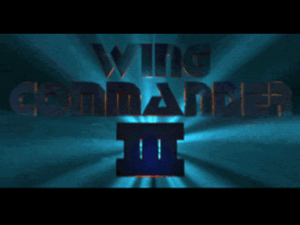
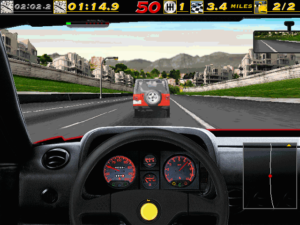
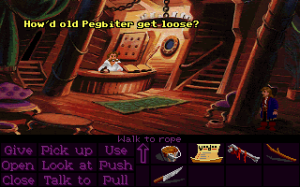
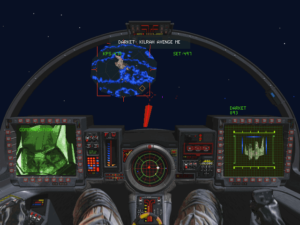
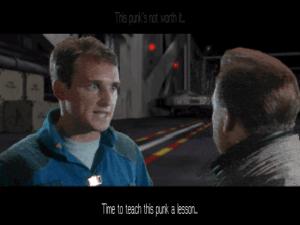
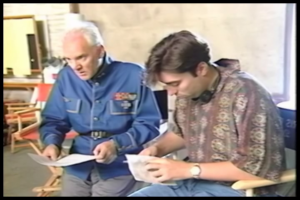

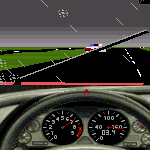
 Posts
Posts
Yes, I watched the secret life of Alex Mack. You are not alone.
Nice article, seems the only difference for me is I never had an ST. An Amiga 500 instead.
I don’t agree about mid range PC’s being £1000, I could swear I got a pentium 120 for £1200. Well, my parents got it for me 🙂
February 7, 2016 @ 7:00 pm
Hi AB, thanks!
I’m pretty sure that we got a 486 DX2-66 from Special Reserve in late ’94 or early ’95 for £999.99! I guess it was considered fairly high spec for the time, and Pentiums were only for big moneybags show-offs. But as ever things changed pretty quickly and we had to upgrade to a P133 (at which point I finally got my hands on WCIII).
February 8, 2016 @ 1:39 pm
special reserve! I remember reading through the full page adverts they had on the back of CU Amiga. (Wishing I had the money to buy everything)
I asked my dad about the price, I was right about it but late 95 so a little after you. The main difference is it turns out the PC was built by one of my dads friends, so mates rates. I seem to think this was the period where building your own PC was much cheaper than buying a pre-built one.
Did you have the turbo button on your 486?
February 15, 2016 @ 6:19 pm
Going by the date of that issue of PC Zone it must have been early-mid ’95 when we got our machine. It sure did have a turbo button! Never understood the point, really. I only ever used it, coincidentally, to try and slow Wing Commander II down to a more playable speed.
February 15, 2016 @ 7:20 pm